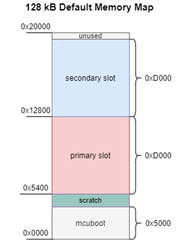Tool/software:
In mspm0g3507 controller is it possible to add secure boot along with secondary bootloader? what limitations are there? I am referring BIM example code, but it only support Execute in place mode as mentioned in documents. what MCUboot is doing in BIM example code? What exact secure boot policies we can implement on mspm0g3507?



